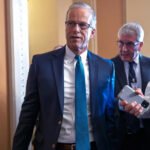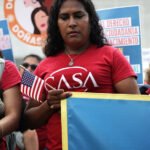Tuesday, December 24, 2024
Year : 2, Issue: 17
by Julian Francis
Over the last few months much has been written of the amazing role of students and other young people in the remarkable ‘Monsoon Revolution’ of July and August 2024. It reminds me of the outstanding contribution made by Indian students when they worked among the millions of Bangladeshi refugees who had fled to India as a result of the brutal crackdown by the Pakistani armed forces and their local collaborators.
In 1971, I was responsible for the administration and coordination of OXFAM’s refugee relief programme which covered the supplementary needs-medical, sanitation, specialized feeding, clothing, blankets etc.- of about 600,000 refugees, men, women and children in over 50 refugee camps in Tripura, Meghalaya, Assam, Cooch Behar, Jalpaiguri, West Dinajpur, Bongaon and Barasat. At the beginning of the refugee relief work, OXFAM was of the opinion that it would be sensible and more cost effective if local personnel could be recruited rather than flying in many foreigners to assist in the relief work. For the previous 3 years, I had been working for OXFAM in Bihar, India, in a village development programme based at four Gandhian Ashrams. Through our Gandhian connections, we came to know that the daughter of a Gandhian leader, Narayan Desai, was studying for her MBBS at the Nil Ratan Sarkar (NRS) Medical College in Kolkata. One evening in May 1971, we met Sanghamaitra Desai, in the students’ canteen of NRS when we discussed the possibility of medical students being allowed to work on rotation in some of the refugee camps.
Sanghamaitra, known to us as ‘Uma’ and her student colleagues were able to obtain permission for students to work in the OXFAM supported camps on rotation. Later on students came from three other Kolkata medical colleges to work with OXFAM. The days were very long for the passionate young medical students. They would get up at about 4 a.m. to prepare snacks, sandwiches and bottles of drinking water for the day as well as all the necessary medical supplies needed for the day. They were then able to set out for the refugee camps soon after 6 a.m. every day. They would return after dark each day and then plan and prepare for the next day. After the Kolkata University authorities understood the value of the work being undertaken by the medical students, their work in the refugee camps was officially regarded as the practical social and preventive medicine part of the students’ MBBS. The success of OXFAM’s initiative with the young students became well-known and we received monthly batches of students and doctors of some of the Mumbai Medical Colleges. Students also came from Cuttack Medical College, Odisha and the Christian Medical College, Ludhiana, Punjab.
Young doctors were also sent to work with us from the Gujarat branch of the Indian Red Cross. In addition to the medical students involved in the relief work, volunteers came to assist with sanitation and feeding work as well as for assisting the setting up of impromptu schools in the camps. They came in batches from the Gandhi Smarak Nidhi, Orissa, as well as Gandhi Ashram Veddchi and Lok Bharti, Sanosra, Bhavnagar, both in Gujarat. Students also came from Vidya Bhavan, Udaipur, Rajasthan. At the end of November 1971, an editorial in The Statesman newspaper acknowledged the contribution of the students in an editorial entitled, “Serve While You Learn”. The editorial reads: “The commendable enthusiasm with which thousands of medical students from Kashmir to Kerala have responded to the needs of East Bengal refugees suggests that a willingness to serve is by no means lacking even in the prevailing anarchy of Indian universities.
American Peace Corps workers have never wanted for Indian helpers in their road-building projects; nor would Oxfam’s relief campaign in West Bengal refugee camps have been possible without the aid of young medical graduates from Maharashtra and Gujarat. If foreign organizations can persuade Indians to do constructive work, why cannot their own mentors do also? It is largely because of Oxfam’s representations that West Bengal medical colleges have now agreed to count an intern’s stint in a refugee camp as part of his training, but obviously this combination of academic learning and practical work needs to be extended on a far wider scale if universities are to live down Dr. P.D. Gajendragadkar’s criticism that they are irrelevant to “the problems of life and society.”
This, then, is how I remember the remarkable contribution of Indian university students and volunteers in the tumultuous days of 1971. Those Indian students moved mountains in 1971 as, indeed, the Bangladeshi students and others have done and are still doing in 2024.
[The Author Julian Francis has been associated with Bangladesh since the Liberation War, received the ‘Friends of Liberation War Honour’ in 2012, Bangladesh Citizenship in 2018 and in 2019 the British honour OBE for ‘services to development in Bangladesh’]







